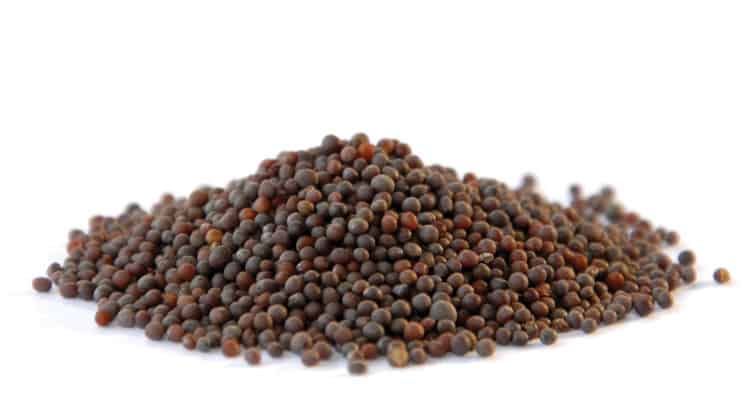Food fight: Who will deliver knockout punch in GMO battle?
In this corner, weighing in with Big Food, farms and biotechnology companies, trade associations and thousands of scientific experts: the pro-GMO viewpoint.
In the opposite corner, weighing in with thousands of nervous American eaters, organic farmers, organic food-product makers and scientific experts who also number in the thousands: the anti-GMO viewpoint.
It’s this Foodie Century’s boxing match, and the stakes are high for both sides. Those with the first view stand to lose millions of customers to the perception that food containing genetically modified organisms is harmful when eaten, even indirectly through animals who have eaten GMO feed. Those with the second view believe they stand to lose their health by eating genetically modified food.
SPONSORED CONTENT
So who’s right?
Safety first
One of the first things a fourth-generation famer on the pro-GMO side will tell you is that seeds that have been genetically modified, which is any genetic alteration done to make a plant produce a desired characteristic (for example, resistance to weed-killing chemicals that don’t kill the corn plant), are “good.”
Dave Eckhardt of Eckhardt Farms plants barley, wheat, pinto beans, sugar beets and corn for grain and silage in LaSalle. When interviewed, Eckhardt was in a race against time to plant onions ahead of a spring storm that dumped two feet of snow the next day.
Genetically engineered foods “are necessary,” Eckhardt said. “As we take more acres out of production for homes and business, it’s imperative that they are used to keep food affordable. For farmers to be profitable, we need the traits.
“I’m not trying to jam GMOs down anybody’s throat,” he added.
“GMO technology frees him up from some pesticide use and makes him a better neighbor, Eckhardt said. “I don’t have to put down cutworm pesticide because the plants can fend off the cutworms. They (GMO seeds) are safe.”
“As we take more acres out of production for homes and business, it’s imperative that they are used to keep food affordable. For farmers to be profitable, we need the traits.”
Dave Eckhardt, Eckhardt Farms
“The system is what I challenge. We are here to challenge the dominant form of agriculture. It’s chemical warfare, and we aren’t going to feed the world this way.”
Steve Hoffman, Compass Natural LLC
To prove it, Eric Brown, communications director for the Greeley-based Colorado Corn association references 1,783 studies conducted from 2002 to 2012 by a variety of sources around the world, which were further examined by Italian scientists in 2013. Those scientists’ conclusion, published in the journal “Critical Review of Biotechnology” in 2013, was that a scientific consensus does exist that GMOs are not harmful. Brown added that the American Medical Association, National Academy of Sciences, World Health Organization, the European Commission, and many others among the world’s most respected scientific organizations have all found GMOs to be safe. He noted that each GM seed variety takes an average of $136 million and 13 years to bring to market because of safety studies.
Dangers cited
One of the first things someone opposed to GMOs will tell you is that a growing body of research brings up valid concerns with safety and mounting use of pesticide as well as the increased incidences of cancer. Together with increased use of glyphosate, a common weed controller also found in Roundup, it adds up to GMOs making our food supply dangerous.
Steve Hoffman, who heads up a company and a website called Compass Natural LLC, addresses, these topics in the rapid-fire delivery of a man who is used to having to make his points quickly.
“The system is what I challenge,” he said. “We are here to challenge the dominant form of agriculture. It’s chemical warfare, and we aren’t going to feed the world this way.”
Hoffman’s website is a landing place for green-business insiders to share news, insights, trends, commentary and analysis in the $290 billion market for natural, organic, and eco-friendly foods.
Hoffman points to “No Scientific Consensus on GMO Safety,” a report endorsed by 300 scientists worldwide and presented in 2014 by A. Hilbeck in an open-access publication called SpringerOpen. The report disagrees with the findings of the Italian scientists mentioned by Brown. It states that real research of GMO safety hasn’t been done. Therefore, it says, “claims of consensus on the safety of GMOs are not supported by objective analysis,”
The report indicates a probable bias in existing studies. The owners of GMO products require contracts in order to control analysis and its publication, and therefore most published studies on the topic were, “performed by biotechnology companies which are also responsible for commercializing these GM (genetically modified) plants.”
Higher yields touted
The GMO case for being an important component in solving the problem of world hunger mostly revolves around higher yields for crops that you don’t see in a grocery store. Corn used for animal feed is one example. In Colorado, the U.S. Department of Agriculture’s National Agricultural Statistic Service reported that yields were stagnant over the 15-year period beginning in 1980 prior to GMO-trait approval, but that they saw a 36 percent increase from 1995 to 2010 after GMO-trait approval.
“Any crop expert will tell you that GMOs played a significant role in that production increases, especially when considering the reduction in so many inputs (fuel, pesticides, water, land) per bushel,” Brown said.
But do GMOs stand between humanity and a food crisis? Alexis Baden-Mayer, political director of the Organic Consumers Association said nothing could be further from the truth.
“There are no GMO seeds marketed as producing higher yields,” she said. “Roundup is sprayed on plants that are used for animal feed and junk food such as corn, alfalfa, soybeans, canola and sugar beets.”
She maintained that the seeds used in GMOs are the ones with proven high yields and are mixed with GMO traits, and that similar yields might just as easily be produced by spraying crops with pesticides. Further, she said, traditional farming practices are better at feeding people. Baden-Mayer referred to a 2011 United Nations report titled, “Eco-Farming Can Double Farm Production in 10 Years,” which states, “Agroecological projects have shown an average crop yield increase of 80 percent in 57 developing countries.”
Weird science
In a story with so many layers, it isn’t surprising that cancer comes up. In this case, it’s through a 2012 study published in “Food and Chemical Toxicology” by Prof. Gilles-Eric Seralini, referenced by Hoffman, that showed glyphosate (again, found in Roundup), a probable carcinogen in laboratory rats that were exposed to it and died of tumors.
People are exposed to glyphosate through consumptions of plants and animals that eat plants sprayed with this weed killer.
Does that mean increased cancer risk?
Hoffman said yes and pointed to the Seralini study as well as an article published by the International Agency for Research on Cancer last year in “The Lancet Oncology” that classified glyphosate as probably carcinogenic to humans.
Mark Sponsler, executive director of Colorado Corn, said no. He said drinking large amounts of coffee, another probable carcinogen, is just as likely to cause cancer and death.
“Glyphosate is among the most researched and tested compounds on the planet,” he said. “GMO haters and people who believe Monsanto is the evil empire attempt to define what science is.”
GMO labeling issues
No discussion of the GMO issue would be complete without touching on the topic of labeling. Here, too, the knots to untangle are complicated for both sides. Connecticut, Maine and Vermont have passed GMO labeling laws. Thirty other states have introduced some kind of GMO labeling legislation. In Colorado, Proposition 105, which called for labeling, lost in the polls in 2014.
But what if you just want to have a non-GMO label on your granola? As the owner of Boulder Granola, Jody Nagel is a natural-foods vendor who has navigated these waters and has emerged as confused as when she began. It cost her thousands to get the non-GMO project label with the butterfly, the one retailers and their customers recognize most.
“We were already USDA-certified organic, but the retailers trust the non-GMO project,” she said. “It took us a year to get certified that way, and even if there is no change in ingredients, it cost an additional $1,200 a year to keep it.”
Nagel said she wished the whole GMO thing were simpler, but she said she moved to Colorado from Connecticut for organic food. The increased scrutiny of food purity is why she’s here and in business in the first place.
“That’s what my brand has always been about,” Nagel said. “Our motto is, ‘Unleash your inner hippie.’ I’m not talking about a hippie from the ’60s. I’m talking about a modern-day hippie who is saying, ‘Wait a moment. What are we allowing here? I like that we are questioning things.’ ”
Food fight: Who will deliver knockout punch in GMO battle?





